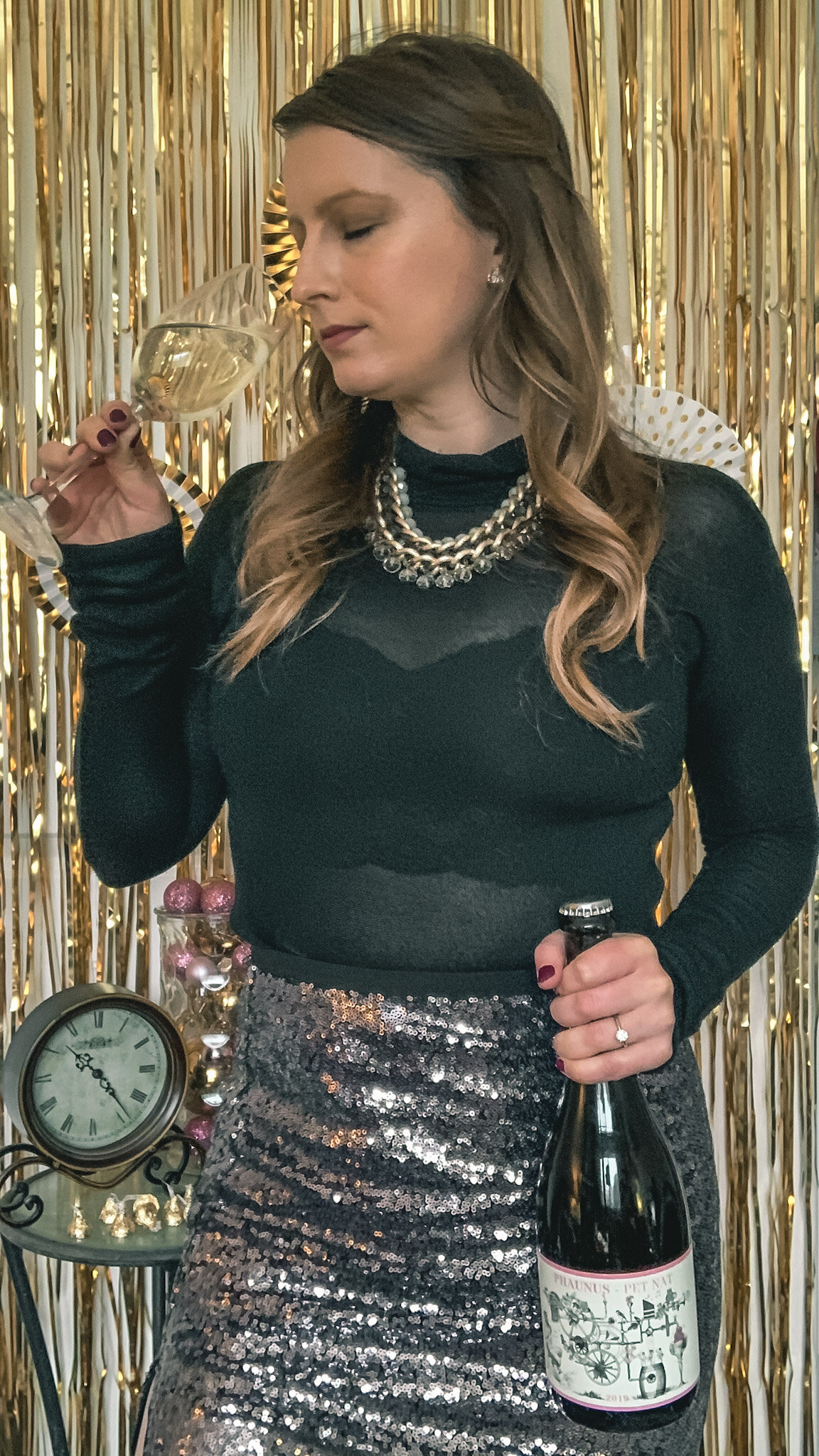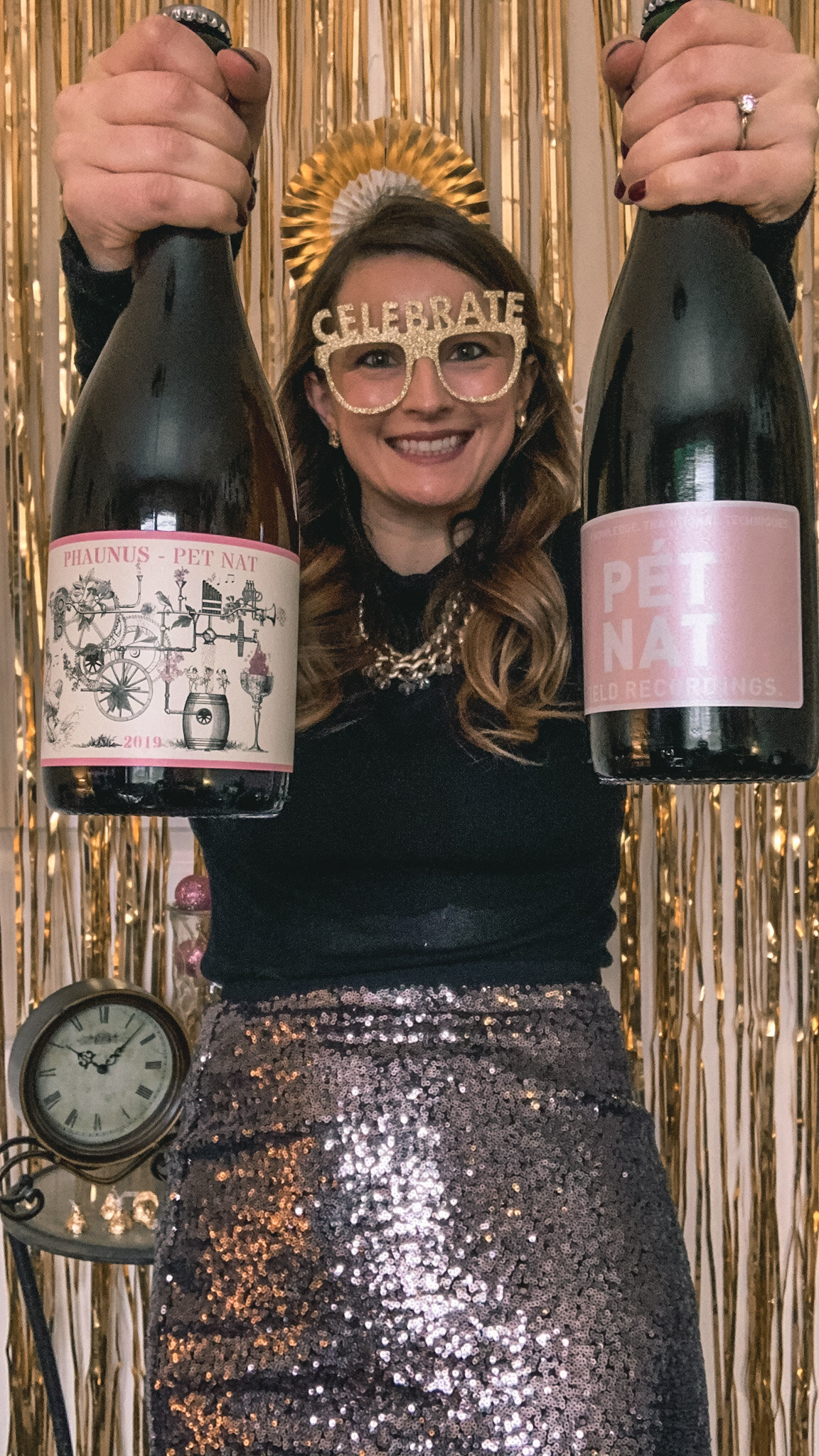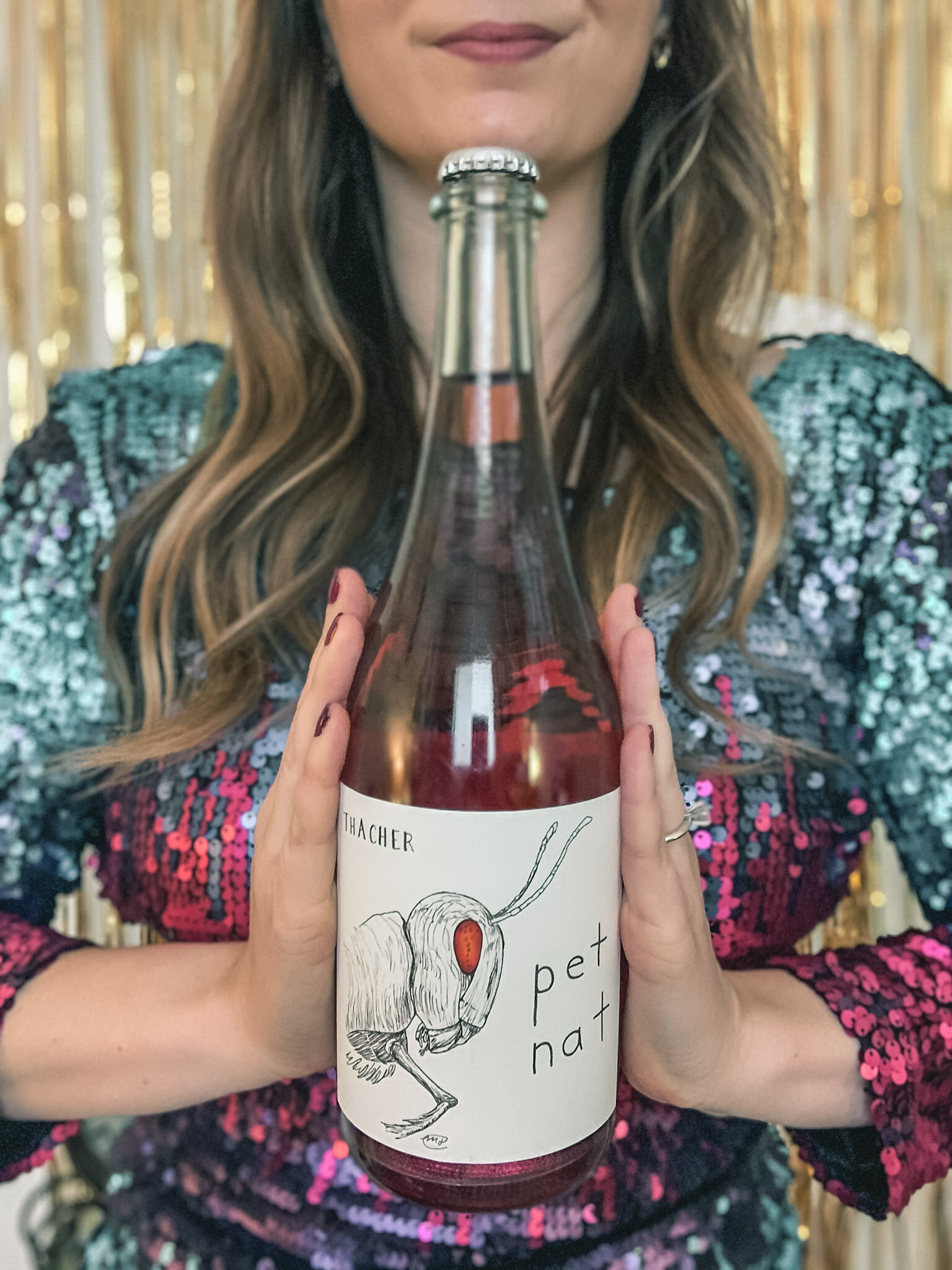For New Year's Eve, Let These Sparklers Knock Your Socks Off!
With New Year just a few days away, the majority of people around the world are planning a very different NYE scene this year like they’ve never experienced before. Instead of large gatherings and parties to ring in the new year, most will probably celebrate with their household or a few close loved ones. Even Time Square in New York City will be empty, as this is the first time since World War II that the 113-year old ball drop ritual has been cancelled. Yet, as tragic and challenging as 2020 has been for all of us, the only thing we can do is look forward… Oh, and pop some bubbly to celebrate that we’ve survived this CRAZY year🥳
Why Champagne on NYE?
Ever wonder why Champagne is the preferred drink of choice on New Year’s Eve? Okay, fine, maybe it’s just me😅. Well after doing a little research, I found that money and status explains why Champagne is so sought-after for celebrations. Its history dates back to 1662 when English scientist Christopher Merrett officially documented "how to put the fizz into sparkling wine". In fact, this is contrary to the belief that French monk Dom Perignon had invented this bubbly drink in 1695. And since then, European aristocrats have popped bottles of Champagne at fancy parties due to its elitist image. Even King Louis XIV preferred it more than any other form of alcohol, and drank his doctor-prescribed glass at just about every meal throughout his life.
As much as I LOVE expensive Champagne, I don’t like spending so much money on it like Louis XIV did (let’s be real😂). I mean popping a bottle of Dom Perignon on a random Tuesday would be great, but it’s not reasonable for the typical average person’s pocketbook Fortunately, there are other options of sparkling wines that are more affordable without sacrificing quality.
Meet Your New Favorite Sparkling Wine
Let me introduce you to your new BSF (Best Sparkling Friend): the dazzling Pét-Nat! I discovered Pét-Nats earlier this year, and immediately fell in love. As a HUGE fan of sparkling, I am constantly looking for solid but budget-friendly bubble options. And let’s be honest… Not many of them are actually decently-priced. When I say “decently-priced”, I mean $30 or cheaper. I am a firm believer that you can find some incredible wines in this price range. Of course, it depends where you’re shopping and what exactly you’re looking for, but it should be achievable nonetheless. Anyways, the beauty of Pét-Nats is that they are your everyday-drinking sparkling wine. Let’s dive into WHY this is.
What is a Pét-Nat?
First things first: the basics of Pét-Nats! This term is short for Pétillant Naturel, which (as I’m sure you can easily tell) is French. It translates to English as “naturally sparkling”, as this style is typically made with minimal intervention―meaning that winemakers usually don’t add any ingredients that could help aid fermentation, as with some other wines. The method used to make this sparkling version is called Methode Ancestrale, or simply the ancestral method, which differs from others (for more info, here is a super informative article by Wine Folly). This is an ancient technique and thought to be the true original for sparkling making, hence why it’s called the “ancestral” method.
An illustration of the ancestral method by Wine Folly.
More specifically, wine destined to become a Pét-Nat is fermented like normal until about halfway through when it’s chilled to pause fermentation, and then bottled. Once the wine warms up, the yeast will become active again and finish out fermentation. This method traps carbon dioxide (produced as a fermentation by-product) inside the bottle, giving the wine those heavenly bubbles that we all crave. Once the desired level of CO2 is achieved, the bottles undergo a process called disgorgement; this is where they are inverted and the bottlenecks put in an ice bath to create an ice cube of lees (dead yeast cells… read more about lees on my Instagram post here) towards the cap. Once the cap is removed quickly and the frozen block is pushed out of the pressurized bottle, the bottle is recapped and wallah, there you have it! No additional sugar, called liqueur d’expedition, is added like via other methods, explaining why it’s more of a hands-off, natural approach. In fact, many winemakers prefer this technique because it often results in a more unique product with some flavor and variation between vintages. Yet, it can be very difficult to time the bottling and disgorgement just right.
All About Those Natural Wines
Regardless, minimal intervention winemaking has become increasingly popular with the recent rise of natural wines (I’m sure you’ve heard of orange wines by now!). When I say “natural” wines, this means that there was no commercial yeast added to the grapes to initiate fermentation; instead, the speed of fermentation depends on the amount of yeast cells present and what kind. Some natural fermentations finish incredibly quickly if they are in a warm environment without any other microbial competitors. Examples include practices like organic, biodynamic, and sustainable farming that produce wines without pesticides and added preservatives. Not only does this create more transparency between wine producers and consumers, it also provides the opportunity for each batch of wine to be unique and slightly different from the next.
Due to the fact that there is no commercial yeast added into the wine destined to be a Pét-Nat, the alcohol level is often lower than your average wine―between 10 to 13%. This varies according to when the fermentation was paused, and if the wine completed fermentation once in bottle. Since lack of yeast decreases the level of control that the winemaker has over fermentation, it’s difficult to dial in the kinetics just right. On the bright side, lower alcohol content means that Pét-Nats make the PERFECT summer wines. In fact, they’ve even been assigned some quite amusing adjectives lately: “glou-glou” (French, meaning invites one to glug down), “vin de soif” (also French, translating to thirst quencher), “poundable” or “crushable” (easy to drink), “natty” (short for natural wine), and “funky” (indicating that there could be some possible microbial spoilage, not necessarily a negative nor positive attribute). Personally, the term “porch pounder” will forever be my favorite🤣
My Current Favorite Pét-Nats
Now to get to the fun part… Talking about my current favorite Pét-Nats! Being more “boutique-y”, these are certainly not wines you’ll find in a grocery store. I’ve compiled a list (arranged from lightest to darkest grape varietals used) for you to refer to in case you want to do a little Pét-Nats research yourself. Note that some of these many have already sold out as this style of wine is often made in limited quantities and disappears rather quickly; however, they’ll most likely have their newest vintage up soon, so stay tuned.
Carboniste "Mackerel" Pinot Grigio ($24)
Carboniste is one of my newest favorites that I found in 2020! The super fun sea creature labels caught my eye, but this Pinot Grigio Pét-Nat stole my heart. Zippy flavors of white nectarine, pear, and zesty lemon light up your tongue when you taste this little number. Can you say “YUM?”
Dreamcôte "Desert Flower" Sauvignon Blanc ($34)
When I was in New Zealand during the pandemic (blog post coming soon😏), I experienced my first sparkling Sauv Blanc. My amazing host family raved about it, and since it’s not big here in the US, I wanted to try as part of exposing myself to new wine styles I was unfamiliar with. And after my first sip, I thought “Why are we not doing this at home??” Yet, after a little searching, I found Dreamcôte. If you LOVE green and tropical aromas of Central Coast Sauv Blanc, this one's for you!
Lone Madrone Chenin Blanc ($35)
While visiting the Paso Robles Wine Merchant located in the newly constructed Paso Market Walk this past fall, the incredible owner Julie (she and her husband Justin do a wonderful job there!) suggested this wine. And considering it was early September and still in the high nineties outside, it sounded like a breath of fresh air. I paired this with the shoyu ramen from Momotaro, and it was a match made in heaven🙌🏻
Scribe Riesling ($36)
A bit yellowish-orange-y color, this Pét-Nat is a force to be reckoned with. Made from 100% Riesling grapes, it is slightly cloudy due to being unfiltered―the OG, or “farmer’s way”, as Caroline Roma (Wine Educator at Scribe) likes to call it. Typical notes of Riesling shine through as petrol lingers in the glass upon serving, in addition to white flower and lime zest.
Alta Colina Rosé Rhône Blend ($28)
Bob Tillman (owner/ head winemaker) and Molly Lonborg (winemaker) over at Alta Colina are true magicians, as I’ve never had a wine that I disliked in their tasting room. A gorgeous blend of 43% Grenache, 21% Marsanne, 19% Viognier, and 17% Roussanne, this Rhône blend is bright with notes of fresh red raspberry and citrus blossom.
Thacher Rosé of Cinsault ($18)
When I first laid my eyes on this bottle, I felt a bit creeped out by the red-eyed grasshopper (which I later noticed compliments that intense orange-red color of the wine) dominating the label. Especially because this is a bit too up close and personal with insects for me. Yet, I was SO grateful that I pushed past and popped this bottle open anyways. On the nose, I was overwhelmed with bright notes of sour cherries and tart raspberries, and a touch of juicy watermelon. The outstanding winemaking duo (Sherman Thacher, owner/ winemaker, and Daniel Callan, assistant winemaker) impressed me yet again.
I absolutely adore this line from the wine description on Raj’s website: "You drink Champagne on Friday and Saturday...on Monday, you drink Pét Nat. That's why we call it MONDAY CLUB!" I couldn’t agree more. These bubbles are a dreamy concoction of strawberries and cream and rhubarb. You’re in for an absolute treat with this one!
Orlaigh Crackling Rosé of Pinot Noir ($29)
This is another wine that Julie from Paso Robles Wine Merchant introduced me to, and I was immediately sold… Especially when I popped it open for a cozy girls night in with Thai takeout. The chilled, crisp bubbles paired with the spice of my red curry (I like it hot😜) was true perfection, and it disappeared too quickly.
Sinor-LaVallee Rosé of Pinot Noir ($28)
A veteran winemaker on the Central Coast, Mine Sinor works his day job at Ancient Peaks (located in Santa Margarita) and started his own brand as a side hobby back in 1997. Since then, several of his wines have been awarded 90+ from reputable wine writers and journals, including this one, which scored 92 points from Wine Enthusiast. The intense flavors of pineapple, lemon, and white peach are striking as the acid is slightly puckering on the tongue. The 2019 marks his fifth vintage of Pét-Nats, unlike many other producers who are just starting out with this method.
Field Recordings Rosé of Cabernet Franc ($25)
The king of experimental wines on the Central Coast, Andrew Jones loves to try new styles and releasing a Pét-Nat is right up his alley. Especially one from Cabernet Franc, as I have not found another Pét-Nat made from it yet. The faint hint of salmon pink resulted from the six hours of skin contact that the juice saw with the grape skins, which also added a touch of fruitiness that’s highlighted through yummy notes of blueberry muffin.
Phaunus Rosé of Alvarelhão/ Vinhão ($29)
A fabulous find from my routine trips to Farmhouse Corner Market in San Luis Obispo (if you live on the Central Coast and haven’t been, drop everything and go NOW), I was super thrilled to find this unexpectedly. It can be difficult to get your hands on imported wines here with so many local wineries and few shops that sell them, but I am stoked when I find a great one. This Pét-Nat is from Minho, located on the northern tip of Portugal. The grapes used are probably some you’ve never heard of: Alvarelhão and Vinhão. As Alvarelhão is often used alongside Touriga Nacional to make port, Vinhão is especially known for its acidic and tannic skin. Thus, the two make a great pair when developed into a Pét-Nat with lively notes of citrus, green apple, and stone fruit.
Don’t those sound glou-glou? 😉 Now I realize that I probably sold you on some of those pretty well but before you rush off to order yourself some, we should chat about serving Pét-Nats. There are two crucial tools that you should have if you drink sparkling wines often: some nice Riedel glasses (stemmed or stemless) and a handy dandy sparkling stopper. With these, your experience will be dramatically elevated―especially if you don’t finish a bottle within an hour or so, and want to revisit it later. As for chilling beforehand, be sure to stick it in the fridge or an ice bucket for at least 30 minutes prior to enjoyment without quick movement; this allows any sediment to fall to the bottom of the bottle, producing four relatively clear glasses of sparkling. Pét-Nats are made to be consumed quickly, so don’t feel the need to age or hang onto it long!
One last thing to note is that Pét-Nats are often bottled with crown caps, like beer bottles. This is completely safe due to the lower amounts of pressure compared to Champagne, often requiring the cage as a safety assurance. It’s one way to easily recognize a Pét-Nat besides looking at the label. Just be careful when removing the cap, as it may foam over.
With that, I hope you enjoyed exploring Pét-Nats with me and that you are able to experience one for yourself soon! Please be sure to share your thoughts with me if you do, as I want to hear what you think. I appreciate you so much for reading this last blog post of 2020, and I cannot wait to share with you all the amazing and incredible things I have planned for next year. Wishing you a sparkling New Year’s Eve as we say sayonara (more like GOOD RIDDANCE👋🏻) to 2020, and welcome in 2021!! 🍾🥂
About Bry
Hi there, I’m Bry Grebe! Wine is one of my greatest passions, and I love learning all I can about it. Join me as I sip through the Central Coast, and expand my winemaking career🍷































